rossvtaylor
Adventurer
Looking good Ross! Can't wait to see it riding high with everything in place! Where did you get the lift blocks? I apologize if you've already mentioned this previously. I am eagerly awaiting the addition of the winch. I am going to have questions on that install!
Scooter...
Hi Scooter, thanks! I made my own lift blocks. I'll pull up the installation photos, and pics of the lift blocks themselves, to post and document for you. I did mine differently than Ozrockrat (which probably means I did mine wrong, since he seems to be an expert in all things big truck...). But, I didn't find any definitive direction either way so I went the way that made sense to my very-much-not-an-expert mind.
I was going to use my milling machine (a 1940's Van Norman 26 beast) and make solid blocks. But, even in that I went a bit of a different route and welded up blocks from 3x3x1/4-inch wall tubing, with a 1/4-inch cap plate. Each section of tubing, alone, has a compressive strength sufficient for 70,000 pounds. I used two sections, welded together with 7018 rod.

I first tacked them together, then did a root pass with smaller rod. Then fill passes with 1/8-inch 7018. That's not undercut on the edges of the weld - the edges of the tube are rounded. The weld itself also adds steel but, even without counting that, each block should be good for 140,000 pounds. I'm definitely overbuilt here. I'll post pics of the blocks and the installation process in the next day or two.
EDIT: I did have a picture of one of the blocks, welded in place, to show now. I'll need to transfer the actual installation pics from my phone, though, so that process will be a separate post. I hope the installation pics will make it more clear... but, essentially, the axle is held in place by U-bolts which sandwich it between (in order, from top to bottom) the air bag suspension arm, the swing arm and bracket, axle, cast steel bottom plate, and second bottom plate (really just a flat steel plate, to which the anti-sway bar is bolted). None of these are the official terms, I'm sure, since I'm new to this. But, it's pretty clear in looking at this sandwich that the axle is positioned front-to-back by the swing arm and the bracket that's bolted to it (which has positioning "teeth" that sit on top of the axle tube). This alignment seems to be pretty critical, as our rig has two shims on the passenger side bracket - they are all of 1/8-inch thick, combined, but apparently this is enough to align the axle correctly. Anyway... I thought it best to keep this bracket in contact with the axle, so it maintains the front-to-back alignment. I realize that swinging it down almost 4 inches will move the axle forward a hair, but it will be the same on both sides so the axle should still be aligned and perpendicular to the truck. So, here's where I departed from the "norm" and I put our spacer block on top of this bracket instead of between it and the axle. This, to my mind, keeps the bracket and swing arm "one" with the axle. The spacer block, above it, is welded to the bracket so it's not going anywhere. And, the top of the spacer/lift block has a hole into which the suspension arm pin fits. It will, I hope, all be more clear with the next post and pics... but, here's what the arm looks like with the spacer block in place.

Before welding on the block, I needed to find out what it was. Cast steel or cast iron? I suspected less-brittle cast steel, but didn't want to screw this up. I did a drilling test and a spark test and a weld-then-break-the-weld-to-see-if-it-bonds test. It's cast steel, so I was good to go (with some pre heating and controlled weld heat). It worked out great.
And, for the winch, I'll get to that in August. We were going to change out the front bumper, with one I'd make. But, the factory bumper is a lot beefier than I expected. There's some real steel in there. So, we'll move it forward (to permit the winch to go behind it) and modify the bumper with some additional plate top and bottom. And we're going to add a <insert big indigenous animal here> guard, to minimize the chance of radiator/engine damage in the event of a strike. (In our case, they're elk.)
Last edited:

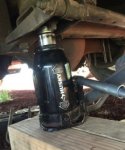

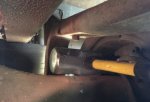
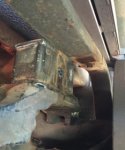
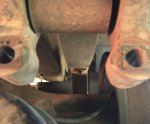
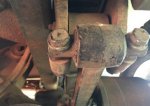
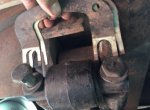

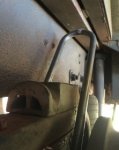

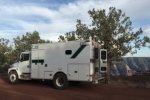
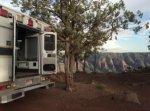
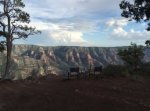

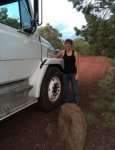

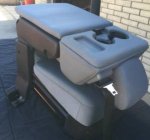
 . If you want to grab it to template the floor profile off that would probably cut your work down. Have you checked all that wiring in the console. All the battery isolator and 2awg cables in mine would be a PITA to move.
. If you want to grab it to template the floor profile off that would probably cut your work down. Have you checked all that wiring in the console. All the battery isolator and 2awg cables in mine would be a PITA to move.